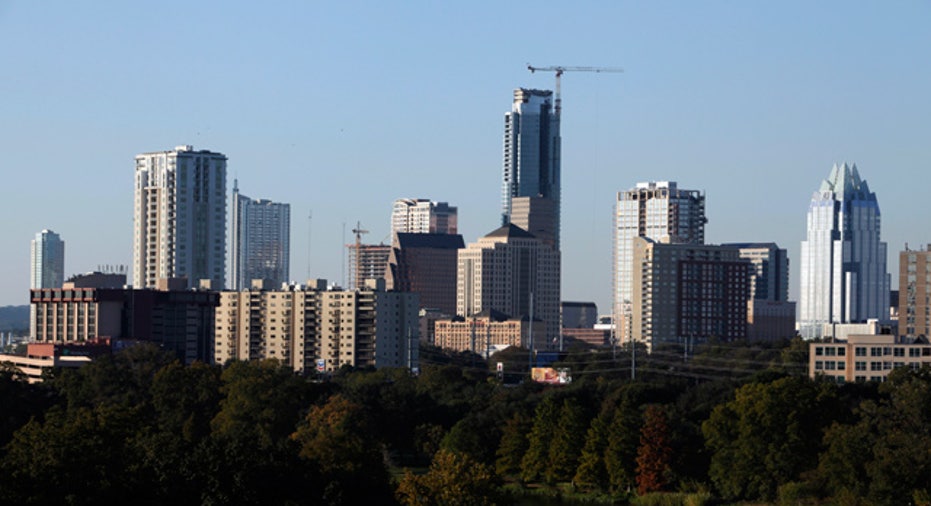7 states that tax the poor the most

As the adage goes, in life, there are only two sureties -- death and taxes. If you're poor and find yourself living in one of these seven states, you'll see your pocketbook shrinking far faster than in the rest of the country.
That's because these seven states have highly regressive -- as opposed to progressive -- tax structures in place. While you're welcome to dive into the weeds on the difference between the two, the bottom line is this: Regressive taxes take a larger percentage of money away from those with less to spend, while progressive taxes -- like federal income taxes in America -- increase with the amount of cash you bring in.
The states that follow have a number of different ways of hitting the poor the hardest.
- Excise taxes -- which take a certain amount of specific types of purchases, such as gasoline -- necessarily extract a large portion of a poor person's budget.
- The same thing can be said for states that rely heavily on sales taxes: That extra cash you pay on a gallon of milk means a lot more to someone just barely making ends meet -- a notable example as most states don't tax groceries, but some of these do to help make up for losses from other sources that aren't taxed.
- Many of these states do not offer refundable credits, which often ease the tax burden for the poorest residents.
According to the Institute on Taxation and Economic Policy (ITEP), here are the seven worst offenders when we're talking about the working-age population. Specifically, these are the seven states where inequality increases to the greatest degree from pre-state-tax income to post-state-tax incomes, as calculated by ITEP's formula.
7. Tennessee
If you're in the poorest 20% of Tennessee residents, you'll end up being taxed at a rate of 10.9%. The middle-class pays a slightly lower 8.4%, while the one-percenters pay 3%. One of the reasons the Volunteer State lands on this list is that it counts on regressive excise and sales taxes to provide over half of the state's tax revenue, even charging sales taxes on groceries, albeit at a lower rate than other items.
6. Pennsylvania
Pennsylvania doesn't exactly target the poor; it just taxes all of its residents at high rates. While the bottom fifth of earners end up paying 12% of their income to Harrisburg (the state capital), the middle and 1% earners also have relatively high rates -- 10.1% and 4.2%, respectively. The difference, though, is still felt the hardest at the bottom.
5. Illinois
Illinois is often referred to as a "tax hell," and not without reason. It has some of the highest tax rates across the board -- and it has still found itself with troubling deficits. While one-percenters pay 4.6% of their pay in taxes, and middle-income folks have a comparatively high 10.9% rate, the poorest pay a hefty 13.2% of their income. Sales taxes on groceries are a particular burden even though they're charged at a lower rate than taxes on other sales.
4. South Dakota
While South Dakota has no income tax to speak of -- providing some relief for low-income earners -- it still relies on sales and excise taxes to provide the majority of revenue. That means that while the poor need to fork over 11.3% of their income in the form of taxes, the top 1% are forced to pay only 1.8% of what they have. Full sales taxes on groceries are a key factor for poorer residents.
3. Texas
Like South Dakota, Texas has no state income tax to speak of. That also means that -- like South Dakota -- it must rely heavily on sales and excise taxes. Texas' poorest residents end up turning over 12.5% of their income to taxes. The middle-class tax rate is 8.8%, while the top 1% pays 2.9%.
2. Florida
Perhaps we might see a pattern developing here: Florida also has no state income tax and thus has to rely on regressive taxes to fill that state's coffers. That means poorer residents end up paying 12.9% in taxes, the middle class comes in with an 8.3% rate, and the richest pay only 1.9% of their income.
1. Washington
Finally, we have the odd case of Washington. I say "odd" because while Florida, Texas, and South Dakota have a reputation as small-government, conservative states that like to do away with income taxes, Washington does not occupy that same ground. But because -- like the aforementioned states -- Washington has no income tax to speak of, it relies on very heavy regressive taxes to make ends meet. That means the poorest end up paying a record-high rate of 16.8% of their income in taxes. The middle class comes in with a fairly high 10.1% rate, and the highest earners pay just 2.4%.
Of course, there are trade-offs with these systems. By not having income taxes, some of these states can offer incentives to the highest earners to move within their borders, thus bringing more spending and economic activity with them. At this point, however, that doesn't seem to be providing enormous relief to the poorest of the poor.
The $16,122 Social Security bonus most retirees completely overlook If you're like most Americans, you're a few years (or more) behind on your retirement savings. But a handful of little-known "Social Security secrets" could help ensure a boost in your retirement income. For example: one easy trick could pay you as much as $16,122 more... each year! Once you learn how to maximize your Social Security benefits, we think you could retire confidently with the peace of mind we're all after. Simply click here to discover how to learn more about these strategies.
The Motley Fool has a disclosure policy.



















